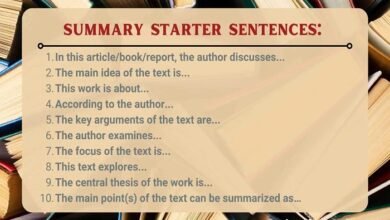White Speech Bubbles: A Comprehensive Guide

Introduction
White speech bubbles are an iconic element of visual communication, frequently seen in comics, digital media, and various forms of graphic design. These bubbles, typically depicted as white, are used to encapsulate dialogue or thoughts, making them a powerful tool for storytelling and expression. In this comprehensive guide, we will explore the origins, uses, and significance of white speech bubbles, delving into their role in both traditional and modern forms of communication. By the end of this blog, you will have a thorough understanding of how white speech bubbles function and why they remain a staple in visual narratives.
The History of White Speech Bubbles
The white speech bubble has a rich history that dates back to the early days of comic strips and graphic novels. Originally, speech bubbles were simple, hand-drawn circles or ovals used to contain dialogue in early cartoons and comics. Over time, the white speech bubble evolved into a standardized design, becoming synonymous with character speech. The use of white speech bubbles allowed for clear visibility of text against colorful backgrounds, enhancing readability and making them an essential element of comic art. Understanding the history of white speech bubbles provides insight into their enduring popularity in visual storytelling.
White Speech Bubbles in Comics and Graphic Novels
In the world of comics and graphic novels, white speech bubbles are a fundamental design element. These bubbles are used to convey dialogue between characters, often positioned close to the speaking character’s mouth or face. The white speech bubble is typically outlined in black, creating a stark contrast that draws the reader’s attention to the dialogue. The use of white speech bubbles in comics is not only about readability but also about pacing and tone. By varying the size, shape, and placement of white speech bubbles, artists can control the flow of conversation and emphasize certain emotions or actions.
White Speech Bubbles in Digital Media
White speech bubbles have found a new home in digital media, where they are commonly used in memes, social media posts, and messaging apps. The simplicity and clarity of the white speech bubble make it an ideal choice for digital communication, where quick and clear message delivery is crucial. On platforms like Instagram, Facebook, and Twitter, white speech bubbles are often superimposed on images or used in graphic posts to convey short, impactful messages. The widespread use of white speech bubbles in digital media underscores their versatility and continued relevance in modern communication.
Design Principles of White Speech Bubbles
The design of white speech bubbles, though seemingly simple, involves several important principles that contribute to their effectiveness. The classic white speech bubble is usually oval or rectangular with rounded corners, which helps to visually soften the text it contains. The bubble’s tail, pointing towards the speaker, is another crucial design element, guiding the viewer’s eye to the source of the dialogue. The white background of the speech bubble contrasts sharply with the black text, ensuring readability. These design principles of white speech bubbles are essential for creating clear and engaging visual communication.
The Psychological Impact of White Speech Bubbles
The psychological impact of white speech bubbles cannot be overlooked. The color white is often associated with clarity, simplicity, and neutrality, making white speech bubbles an effective tool for conveying messages without distraction. In both comics and digital media, white speech bubbles serve as a neutral canvas for text, allowing the content of the message to take center stage. This neutrality also helps to create a sense of universality, where the focus remains on the dialogue rather than the visual design. Understanding the psychological impact of white speech bubbles can enhance their use in both creative and professional contexts.
White Speech Bubbles in Branding and Marketing
White speech bubbles have also made their way into branding and marketing, where they are used to create relatable and engaging content. Brands often incorporate white speech bubbles into their advertisements, social media posts, and promotional materials to convey messages in a friendly and approachable manner. The simplicity of the white speech bubble allows brands to focus on the message while maintaining a clean and modern aesthetic. In marketing, white speech bubbles can be used to highlight customer testimonials, product features, or promotional offers, making them a versatile tool in the brand’s visual toolkit.
White Speech Bubbles in Animation and Film
In animation and film, white speech bubbles are used to depict thoughts, dialogue, and narration in a visually engaging way. While traditional speech bubbles are less common in live-action films, they are a staple in animated features and shorts. The use of white speech bubbles in animation allows for creative storytelling, where the dialogue can be visually represented without the need for voiceovers or subtitles. This technique is often used in animated shorts, children’s cartoons, and experimental films, where white speech bubbles add a layer of visual interest and clarity to the narrative.
Customizing White Speech Bubbles for Creative Projects
Customizing white speech bubbles allows designers and artists to tailor them to specific creative projects. By adjusting the shape, size, and style of the white speech bubble, creators can convey different tones and emotions. For example, jagged or spiky white speech bubbles can indicate shouting or excitement, while soft, rounded bubbles can suggest calmness or introspection. Additionally, the font and color of the text within the white speech bubble can be customized to match the overall aesthetic of the project. Customization of white speech bubbles offers endless possibilities for creative expression.
White Speech Bubbles in Social Media Communication
Social media platforms have embraced the white speech bubble as a tool for communication and expression. Whether in the form of memes, comment boxes, or chat bubbles, the white speech bubble is ubiquitous in social media interactions. Users often add white speech bubbles to images to create humorous or insightful commentary, making them a popular choice for meme creators. In messaging apps like WhatsApp and Messenger, white speech bubbles represent the conversation flow, with each bubble containing a snippet of the ongoing dialogue. The use of white speech bubbles in social media highlights their role in facilitating digital conversations.
The Role of White Speech Bubbles in User Interface Design
In user interface (UI) design, white speech bubbles are often used to create intuitive and user-friendly experiences. For instance, in chat applications, white speech bubbles are employed to display user messages in a clear and organized manner. The white background ensures that the text is easily readable, while the bubble’s shape and placement help users navigate the conversation seamlessly. Additionally, white speech bubbles are used in notification designs, guiding users through interactions with apps and websites. The role of white speech bubbles in UI design underscores their importance in enhancing usability and improving communication in digital interfaces.
The Future of White Speech Bubbles in Visual Communication
As visual communication continues to evolve, the future of white speech bubbles remains promising. With advancements in technology and design, white speech bubbles are likely to become even more dynamic and interactive. For instance, augmented reality (AR) and virtual reality (VR) platforms may incorporate white speech bubbles to facilitate communication in immersive environments. Additionally, as social media platforms continue to grow, the use of white speech bubbles in digital content is expected to increase, offering new ways for users to express themselves. The future of white speech bubbles in visual communication is bright, with endless possibilities for innovation and creativity.
Conclusion
White speech bubbles are a vital component of visual communication, playing a significant role in comics, digital media, branding, and more. Their simplicity, clarity, and versatility make them an enduring tool for conveying messages effectively. Whether used in traditional comics or modern social media posts, white speech bubbles continue to be a powerful means of expression. Understanding their history, design principles, and applications can enhance your ability to communicate visually, whether for creative projects, marketing, or everyday interactions. As we move forward, the white speech bubble will undoubtedly remain a staple in the world of visual communication.
FAQs
1. What is a white speech bubble?
A white speech bubble is a visual element used to encapsulate dialogue or thoughts in comics, digital media, and graphic design, typically featuring black text on a white background.
2. Where are white speech bubbles commonly used?
White speech bubbles are commonly used in comics, graphic novels, digital media (such as social media and memes), branding, marketing, and user interface design.
3. Why are white speech bubbles important in communication?
White speech bubbles are important in communication because they provide a clear, neutral background for text, making it easy to read and understand the message being conveyed.
4. How can white speech bubbles be customized?
White speech bubbles can be customized by adjusting their shape, size, style, and the font or color of the text, allowing for creative expression and matching the aesthetic of specific projects.
5. What is the future of white speech bubbles in visual communication?
The future of white speech bubbles in visual communication includes potential advancements in AR, VR, and digital media, where they will continue to be a dynamic and interactive tool for communication.





